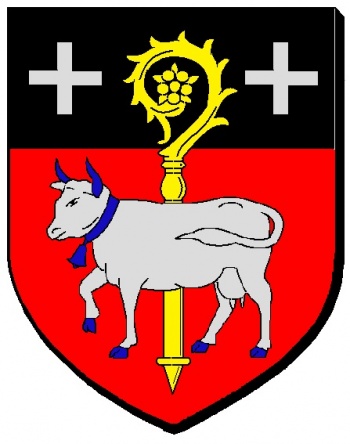La Vacquerie-et-Saint-Martin-de-Castries: Difference between revisions
Jump to navigation
Jump to search
Knorrepoes (talk | contribs) m (Text replacement - "↵{{media}}" to " {{fr1}} {{media1}}") |
Knorrepoes (talk | contribs) m (Text replacement - "{{fr}}" to "") Tags: Mobile edit Mobile web edit |
||
| Line 1: | Line 1: | ||
''' {{uc:{{PAGENAME}}}} ''' | ''' {{uc:{{PAGENAME}}}} ''' | ||
Revision as of 15:44, 26 December 2022
LA VACQUERIE-ET-SAINT-MARTIN-DE-CASTRIES
Département : Hérault
| French | De gueules au chef de sable chargé de deux croisettes d'argent; à la crosse d'or brochant sur le tout; à la vache passante d'argent accornée, onglée, colletée et clarinée d'azur brochant sur le champ et la crosse. |
| English | Vacquerie-et-Saint-Martin-de-Castries No blazon/translation known. Please click here to send your (heraldic !) blazon or translation |
Origin/meaning
The arms were adopted in June 2003.
The cow (vache) is a canting element for La Vaquerie. In 1832 it was merged with the hamlet of Saint-Martin-de-Castries and the two crosses refer to the two villages.
The black chief refers to the local (dark) caves and the prehistoric inhabitation of the area. The crosier refers to the Bishop of Lodève and the Abbot of Saint-Guilhem to whom the village historically belonged. The red colour is the colour of the Languedoc region.
Literature: Image from http://www.armorialdefrance.fr
